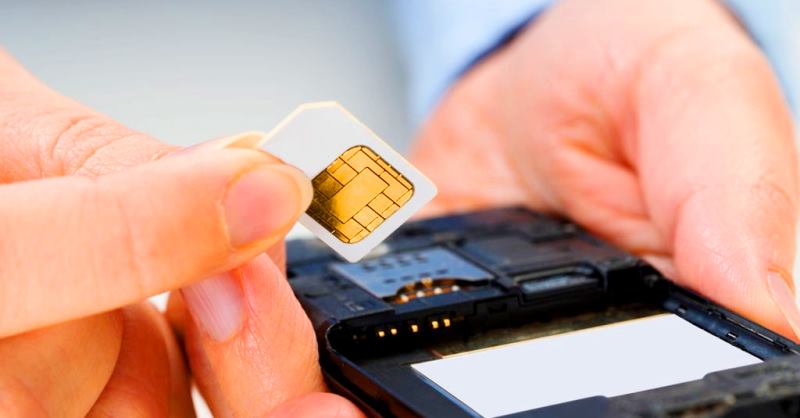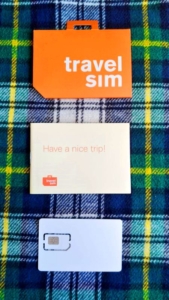How to Buy a SIM Card in Indonesia: A Comprehensive Guide
Buying a SIM card in Indonesia – When traveling to Indonesia, staying connected is essential for navigating through its vibrant streets, communicating with locals, and accessing online resources. One of the easiest ways to ensure constant connectivity is by purchasing a local SIM card. This guide will walk you through everything you need to know about buying a SIM card in Indonesia, from the types available to the registration process and beyond.
Types of SIM Cards
In Indonesia, SIM cards come in two main types: prepaid and postpaid. Prepaid SIM cards are ideal for travelers who want to control their expenses, as they require users to top up their balance before usage. On the other hand, postpaid SIM cards offer more convenience with monthly billing but may require a contract.
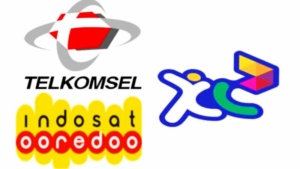
Where to Buy a SIM Card
When arriving in Indonesia, purchasing a SIM card is a straightforward process, with options available at various locations throughout the country. Buying a SIM card in Indonesia: Here are some of the most common places where you can buy a SIM card:
1. Airports
One of the most convenient places to buy a SIM card is at the airport upon arrival. Major airports in Indonesia, such as Jakarta’s Soekarno-Hatta International Airport and Bali’s Ngurah Rai International Airport, have dedicated booths or kiosks operated by telecom providers where travelers can purchase SIM cards and activate them immediately.
2. Convenience Stores
Convenience stores, such as 7-Eleven, Circle K, and Indomaret, are ubiquitous in Indonesia and often carry SIM cards from various telecom providers. These stores offer a convenient option for travelers who prefer to buy a SIM card outside of the airport or during their stay in the country.
3. Official Stores of Telecom Providers
Telecom providers in Indonesia, such as Telkomsel, XL Axiata, and Indosat Ooredoo, have official stores located in shopping malls, commercial areas, and urban centers across the country. These stores offer a wide selection of SIM cards, data packages, and other telecom services, along with assistance from knowledgeable staff.
4. Mobile Phone Shops
In addition to convenience stores and official stores of telecom providers, travelers can also purchase SIM cards from independent mobile phone shops and retailers. These shops are often found in busy market areas and shopping districts, offering a range of SIM card options and accessories for mobile devices.
5. Street Vendors
In some tourist areas and busy streets, street vendors may sell SIM cards alongside other goods and services. While buying from street vendors can be convenient, travelers should exercise caution and ensure that the SIM card is from a reputable telecom provider to avoid any issues with activation or coverage.
No matter where you choose to buy a SIM card in Indonesia, it’s essential to verify the authenticity of the SIM card and purchase it from a trusted source. By purchasing a SIM card from a reliable provider, you can enjoy uninterrupted connectivity and peace of mind during your stay in Indonesia.
Documents Required
Buying a SIM Card in Indonesia, To purchase and register a SIM card in Indonesia, travelers typically need to provide the following documents:
1. Passport
A valid passport is required for identity verification when purchasing a SIM card. Travelers must present their passports to the retailer or telecom provider as part of the registration process.
2. Photocopy of Passport
In addition to presenting the original passport, travelers are often required to provide a photocopy of the passport’s photo and personal information pages. This photocopy is used for documentation purposes and may be retained by the retailer or telecom provider.
3. Indonesian Visa (if applicable)
Depending on the traveler’s nationality and length of stay, an Indonesian visa may be required for entry into the country. Travelers holding a visa must present it along with their passport when purchasing a SIM card.
4. Local Address (sometimes)
In some cases, travelers may be asked to provide a local address, such as the address of their hotel or accommodation, during the SIM card registration process. This information helps telecom providers verify the traveler’s identity and residence in Indonesia.
5. Additional Identification (rarely)
In rare instances, telecom providers may request additional forms of identification, such as a driver’s license or national ID card, to complete the SIM card registration process. However, a passport is typically sufficient for most travelers.
By ensuring that they have the necessary documents ready, travelers can streamline the process of purchasing and registering a SIM card in Indonesia, allowing them to enjoy seamless connectivity during their stay in the country.
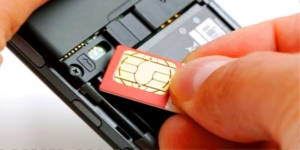
Registration Process
Top-Up Options
Once you have purchased a SIM card in Indonesia, you’ll need to top up your balance to continue using mobile services such as making calls, sending messages, and accessing the internet. Here are the top-up options available:
1. Vouchers
Top-up vouchers are widely available at convenience stores, street vendors, and official stores of telecom providers across Indonesia. These vouchers come in various denominations, allowing you to choose the amount that suits your budget. To top up your balance, simply scratch the voucher to reveal the recharge code and follow the instructions provided by your telecom provider.
2. Mobile Apps
Many telecom providers in Indonesia offer mobile apps that allow users to top up their balance directly from their smartphones. These apps provide a convenient way to manage your account, check your balance, and purchase data packages on the go. Simply download the app from the Google Play Store or Apple App Store, register your SIM card, and follow the prompts to top up your balance securely.
3. Online Banking
Some telecom providers also offer online banking services that allow users to top up their balance through internet banking or mobile banking apps. This option is convenient for travelers who prefer to manage their finances digitally and may not have access to physical top-up vouchers. Simply log in to your bank’s online banking platform, select the option to top up your mobile phone, and follow the instructions provided.

4. ATM Machines
Many ATMs in Indonesia offer the option to top up your mobile phone balance directly from the machine. Simply insert your debit or credit card, select the top-up option, and follow the prompts to recharge your SIM card. This option is convenient for travelers who need to top up their balance outside of regular store hours or in remote areas where other top-up options may not be available.
5. E-Wallets
With the rise of digital payments in Indonesia, some telecom providers allow users to top up their balance using popular e-wallets such as GoPay, OVO, and Dana. Simply link your e-wallet account to your mobile number, transfer funds to your telecom provider’s designated account, and your balance will be topped up instantly. This option is convenient for travelers who prefer cashless transactions and want to take advantage of e-wallet promotions and discounts.
By utilizing these top-up options, travelers can ensure that they always have enough credit on their SIM card to stay connected and enjoy mobile services during their time in Indonesia.
Activation Process
Coverage and Network Quality
When choosing a telecom provider and purchasing a SIM card in Indonesia, it’s essential to consider the coverage and network quality to ensure a reliable and seamless mobile experience. Here’s what you need to know:
1. Urban Areas
Major cities and urban centers in Indonesia, such as Jakarta, Surabaya, and Bandung, typically have excellent network coverage and high-speed internet access. Telecom providers invest heavily in infrastructure in these areas to meet the high demand for mobile services and provide reliable connectivity to urban dwellers and businesses.
2. Rural Areas
While urban areas enjoy robust network coverage, rural and remote areas of Indonesia may experience varying levels of network availability and quality. In some cases, network coverage in rural areas may be limited to certain locations or may experience slower internet speeds due to infrastructure limitations.
3. Network Technologies
Telecom providers in Indonesia utilize a variety of network technologies, including 2G, 3G, and 4G LTE, to deliver mobile services to their customers. 4G LTE networks offer faster data speeds and improved performance compared to older technologies, making them ideal for streaming, gaming, and other data-intensive activities.
4. Coverage Maps
Before purchasing a SIM card, travelers can check coverage maps provided by telecom providers to get an overview of network coverage in their desired destination. Coverage maps show the extent of network coverage in different regions of Indonesia and can help travelers choose a provider with the best coverage in their area of interest.
5. Network Congestion
In densely populated areas and during peak hours, network congestion may occur, leading to slower internet speeds and dropped calls. Telecom providers continuously monitor and optimize their networks to minimize congestion and provide a smooth and uninterrupted mobile experience for their customers.
6. Roaming Coverage
For travelers exploring remote or off-the-beaten-path destinations in Indonesia, it’s essential to consider roaming coverage offered by their telecom provider. While major providers offer extensive roaming coverage within Indonesia, coverage may be limited or unavailable in certain remote areas or islands.
By understanding the coverage and network quality of different telecom providers, travelers can make informed decisions when purchasing a SIM card and ensure that they stay connected wherever their adventures take them in Indonesia.
Cost Comparison
When purchasing a SIM card and selecting a mobile plan in Indonesia, it’s important to consider the costs associated with data packages, call rates, and other services offered by telecom providers. Here’s a cost comparison to help you find the best deal:
1. Data Packages
Telecom providers in Indonesia offer a variety of data packages catering to different usage preferences and budgets. Prices for data packages vary depending on the amount of data included and the validity period. Travelers can choose from daily, weekly, or monthly data packages based on their needs.
2. Call Rates
Call rates for local and international calls vary among telecom providers in Indonesia. Prepaid plans typically offer competitive call rates, with per-minute or per-second billing options available. Some providers also offer discounted rates for calls to certain numbers or during off-peak hours.
3. Text Messaging
Text messaging, or SMS, is another service offered by telecom providers in Indonesia. Prepaid plans often include a certain number of free SMS messages per day or per month, with additional charges for exceeding the limit. International SMS rates may vary depending on the destination country.
4. Data Speeds
While most telecom providers in Indonesia offer 4G LTE network coverage, the actual data speeds may vary depending on factors such as network congestion and location. Travelers who require high-speed internet access for streaming, gaming, or video calls may opt for plans with higher data speeds and larger data allowances.
5. Promotional Offers
Telecom providers frequently offer promotional deals and discounts to attract new customers and retain existing ones. These promotions may include discounted data packages, free call minutes, or bonus data for topping up your balance. Travelers should keep an eye out for these promotions when purchasing a SIM card.
6. Value-Added Services
In addition to basic voice and data services, telecom providers in Indonesia offer a range of value-added services such as international roaming, data sharing, and entertainment content. Travelers should consider the availability and cost of these services when comparing plans to find the best value for their money.
By comparing the costs of data packages, call rates, and other services offered by different telecom providers, travelers can choose a plan that meets their needs and budget while ensuring they stay connected during their time in Indonesia.
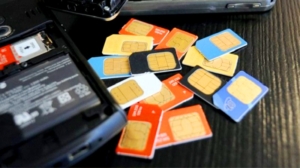
Additional Services Buying a SIM card in Indonesia
In addition to basic voice and data services, telecom providers in Indonesia may offer additional services such as international roaming and data sharing among multiple devices.
Tips for Using a SIM Card in Indonesia
To make the most of their SIM card experience, travelers should monitor their data usage, keep their SIM cards safe from damage or loss, and familiarize themselves with the available customer support options.
Customer Support
In the event of any issues or inquiries regarding your SIM card or mobile services in Indonesia, telecom providers offer various customer support channels to assist you. Here’s how you can reach out for help:
1. Helpline Numbers
Telecom providers in Indonesia operate dedicated helpline numbers that customers can call for assistance with their mobile services. These helpline numbers are staffed by trained customer service representatives who can help troubleshoot issues, answer questions, and provide support in multiple languages.
2. Online Chat Support
Many telecom providers offer online chat support through their official websites or mobile apps. Customers can initiate a chat session with a customer service representative to receive real-time assistance with their inquiries or issues. Online chat support is convenient for customers who prefer instant communication and may not have access to a phone.
3. Email Support
Customers can also reach out to telecom providers via email for assistance with their mobile services. By sending an email to the provider’s designated support address, customers can submit their inquiries or report any issues they encounter. Email support is suitable for non-urgent matters or for providing detailed information about complex issues.
4. Social Media
Many telecom providers maintain active social media profiles on platforms such as Facebook, Twitter, and Instagram. Customers can reach out to providers through direct messages or by commenting on posts to seek assistance or share feedback. Social media support allows for public visibility of inquiries and provides a platform for quick resolution of issues.
5. In-Person Support
For customers who prefer face-to-face interaction, telecom providers operate official stores and service centers in various locations across Indonesia. Customers can visit these stores to speak with customer service representatives in person, get assistance with their SIM card or mobile device, and receive personalized support.
6. FAQ Sections
Telecom providers often maintain comprehensive FAQ (Frequently Asked Questions) sections on their websites or mobile apps. Customers can browse these sections to find answers to common inquiries about SIM card activation, top-up procedures, billing inquiries, and more.
Replacing a Lost SIM Card
If a SIM card is lost or damaged, travelers can replace it by visiting the local store of their telecom provider. Replacement procedures and associated costs may vary, depending on the provider.
Conclusion Buying a SIM card in Indonesia
Buying a SIM card in Indonesia is a simple yet crucial step for travelers looking to stay connected during their visit. With various options available from major telecom providers and straightforward registration and activation processes, staying connected has never been easier.
Unique FAQs Buying a SIM card in Indonesia
- Can I use my foreign SIM card in Indonesia?
- While some international SIM cards offer roaming services in Indonesia, using a local SIM card is often more cost-effective for extended stays.
- Do I need to unlock my phone to use a local SIM card in Indonesia?
- Most modern smartphones are compatible with SIM cards from different providers, but it’s always best to check with your phone manufacturer or carrier.
- Are there any restrictions on internet usage with Indonesian SIM cards?
- Telecom providers in Indonesia may impose fair usage policies on unlimited data plans to prevent network abuse.
- Can I purchase a SIM card without a passport?
- In most cases, a passport is required for SIM card registration in Indonesia to comply with government regulations.
- What should I do if my SIM card stops working suddenly?
- If your SIM card stops working unexpectedly, contact your telecom provider’s customer support for assistance and troubleshooting.
